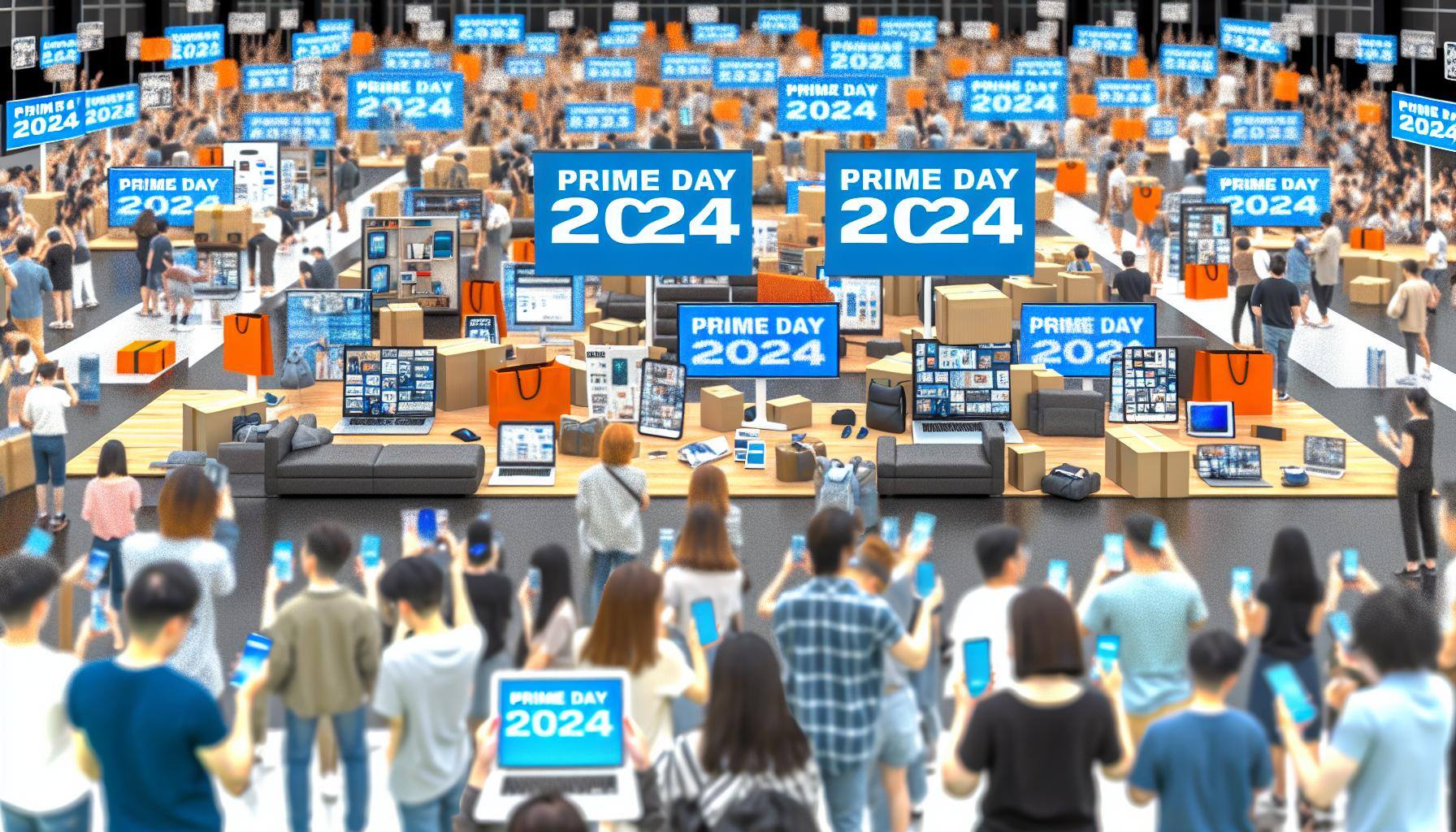Prime Day has become one of the biggest shopping events of the year, offering unparalleled opportunities for sellers to boost sales, attract new customers, and increase brand visibility. As an Amazon seller, mastering Prime Day requires careful planning, strategic execution, and a deep understanding of your target market. In this blog, we'll walk you through the essential strategies, common pitfalls to avoid, and expert tips to help you make the most out of Prime Day 2024.
Here is what you need to consider when prepping for Prime Day 2024:
1. Create Deals by May 3, 2024
-
Don't miss out on the Prime Day frenzy! Craft your irresistible deals to secure your spot in the sale.
-
Ensure your account and products meet the eligibility criteria, with ratings exceeding 4 stars.
2. Send in your FBA inventory by June 20, 2024
-
Ensure your FBA inventory reaches our fulfillment centers. Plan ahead and ship early to tackle any potential logistics hurdles.
-
Don't forget to review your recommended replenishment quantity and monitor restock limits by storage type for maximum efficiency.
3. Optimize Product Listings
-
Review and update your product listings to ensure they are accurate, engaging, and optimized for search.
-
Use high-quality images, clear product descriptions, and relevant keywords to improve visibility and conversion rates.
-
Highlight any special offers, discounts, or promotions you'll be running during Prime Day.

Mistakes to Avoid:
- Ignoring Early Preparation: Waiting until the last minute to create deals or send in inventory can result in missed opportunities and logistical challenges.
- Underestimating Traffic: Failing to prepare for increased website traffic can lead to crashes, slow load times, and lost sales.
- Neglecting Customer Engagement: Overlooking communication with customers before and during Prime Day can hinder engagement and conversion rates.
- Lack of Competitive Analysis: Not monitoring competitors' strategies and pricing can result in missed opportunities to differentiate and maximize sales.
- Poor Fulfillment Planning: Inadequate planning for fulfillment and logistics can lead to delayed shipments and dissatisfied customers.
4. Fine-Tune Advertising Campaigns
- Increase your advertising budget and optimize your campaigns to maximize visibility during Prime Day.
- Utilize Amazon Sponsored Products, Sponsored Brands, and Sponsored Display ads to target relevant shoppers.
- Monitor your ad performance closely and adjust bids and targeting strategies as needed.
5. Prepare for Increased Traffic
- Ensure your website and Amazon store are optimized for peak traffic to handle the increased influx of visitors.
- Check the loading speed of your pages, optimize images, and streamline the checkout process to minimize bounce rates.
- Consider using Amazon Web Services (AWS) or other scalable hosting solutions to handle spikes in traffic.
6. Offer Exclusive Deals and Promotions
- Create compelling offers and discounts exclusively for Prime Day to attract shoppers.
- Consider offering limited-time deals, lightning deals, or bundled promotions to incentivize purchases.
- Use Amazon's Deal of the Day or Prime Early Access features to showcase your best offers to Prime members.
- Pro Tip: Explore Prime Exclusive Discounts for added allure, available before or during the event, as long as they meet Prime Day eligibility standards.
7. Engage with Customers
- Leverage social media, email marketing, and other channels to build excitement and drive traffic to your Prime Day deals.
- Encourage customers to sign up for notifications or join your loyalty program to receive exclusive Prime Day offers.
- Respond promptly to customer inquiries and feedback to provide a seamless shopping experience.
8. Monitor Competitor Activity
- Keep an eye on your competitors' pricing, promotions, and inventory levels leading up to Prime Day.
- Adjust your strategy accordingly to stay competitive and capitalize on any gaps or opportunities in the market.
- Consider offering price-matching or additional perks to stand out from the competition.
9. Optimize Fulfillment and Logistics
- Work closely with Amazon's fulfillment services or third-party logistics providers to ensure timely order processing and delivery.
- Communicate any special requirements or deadlines for Prime Day shipments to avoid delays.
- Consider offering expedited shipping options or fulfillment by Amazon (FBA) to meet Prime members' expectations for fast delivery.
10. Track Performance and Analyze Results
- Monitor your sales, traffic, and conversion metrics closely throughout Prime Day to gauge the effectiveness of your strategies.
- Identify any trends or patterns in customer behavior and adjust your approach in real-time to optimize performance.
- Conduct a post-mortem analysis after Prime Day to evaluate what worked well and areas for improvement for future events.
By following these steps and preparing strategically, Amazon sellers can maximize their success and capitalize on the opportunities presented by Prime Day 2024. Don't forget to check our Shopping Events page to download your Amazon Shopping Events Readiness Guide.
We Can Help!
Phelps UNITED is here to provide expert guidance on your Amazon selling strategy and brand advertising tips, explore our website to learn more.


